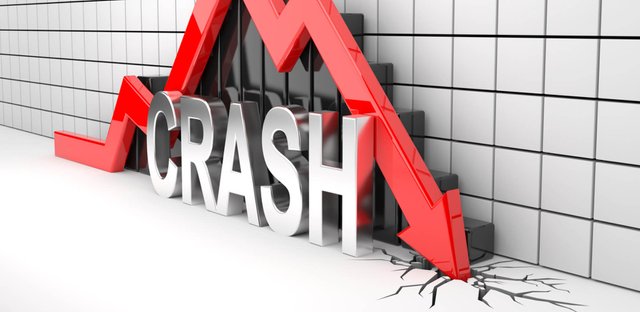A Stock Market Crash: A Matter Of “When,” Not “If”

Given group-think and the determination of policy makers to do ‘whatever it takes’ to prevent the next market ‘crash,’ we think that the low-volatility levitation magic act of stocks and bonds will exist until the disenchanting moment when it does not. And then all hell will break loose, a lamentable scenario that will nevertheless present opportunities that are likely to be both extraordinary and ephemeral. – Highly regarded hedge fund manager, Paul Singer, in his latest investor newsletter
Singer has apparently has unloaded $5 billion worth of stock, which is 15% of his funds management.
Anyone happen to notice that several market commentators have argued that Bitcoin is a bubble but the same stock “experts” look the other way as the U.S. stock market becomes more overvalued by the day vs. the deteriorating underlying fundamentals? Bitcoin going “parabolic” triggers alarm bells but it’s okay if the stock price of Amazon.com Inc (NASDAQ:AMZN) is hurtling toward parity with the price of one ounce of gold. Tesla (NASDAQ:TSLA) burns a billion per year in cash. It sold 76,000 cars last year vs. 10 million worldwide for General Motors (NYSE:GM). Yet Tesla’s market cap is $51.7 billion vs. $48.8 billion for GM.
This insanity is the surest sign that the stock market bubble is getting ready to pop. If you read between the lines of the the comments from certain Wall Street analysts, the only justification for current valuations is “Central Bank liquidity” and “Fed support of asset values.” This is the most dangerous stage of a market top because it draws in retail “mom & pop” investors who can’t stop themselves from missing out on the next “sure thing.” There will be millions of people who are permanently damaged financially when the Fed loses control of this market. Or, as legendary “vulture” investor Asher Edelman stated on CNBC, “I don’t want to be in the market because I don’t know when the plug is going to be pulled.”
A friend/colleague of mine is a point and figure chart aficionado. He sent me an email on Thursday in which he said even with the five horsemen (FANGs + AAPL) and the S&P and Dow up today (and the S&P setting a new all-time high), the bullish percent index (BPI) of the NYSE is negative which means there are more stocks generating a point and figure sell signal than a buy signal. This has been fairly consistent over the past couple of weeks. (Note: the bullish percent index is a breadth indicator based on the number of stocks on point & figure buy signals). When the BPI is negative over an extended period of time, it reflects the fact that a lot more stocks in the NYSE are trending lower than are trending higher. When a declining number of stocks are participating in the move higher of a stock index, it is a bearish signal.
As my friend says, “in reality this will continue until it doesn’t.” He goes on to say: ” what this shows me is that at this time it’s much better to be strategically short than broadly short. This will change too at some point…”
Picking out strategic shorts has been the focus of the Short Seller’s Journal. Not all of the ideas have worked and a couple back-fired – in defiance of the company’s underlying fundamentals – but many ideas are well below the price at which they were presented either the first time or presented again thereafter. One idea that has declined 39% (declined $42) since August 2016 is Ralph Lauren (NYSE:RL), which was presented on August 14, 2016 at $108.19. It closed Friday at $66.11, down 41 cents on a day when the S&P hit another all-time high. RL has closed lower on 12 of the last 13 days.
One subscriber emailed me earlier this week to let me know he had shorted 200 shares at $108 and covered 100 of it this week. He’s hanging on to the other 100 share short. I mentioned to him that my 12-18 month target was $50 and that he should hold the other 100 short at least until August because it’s only going to get worse for the consumer and retailers.
Currently there’s a a large percentage of stocks trading below their 50 and 200 day moving averages. Many stocks are close or at 52-week lows. Some stocks, like Sears Holdings Corporation (NASDAQ:SHLD) are no-brainer shorts. Sears is going to file for bankruptcy – it’s down 32% from April 2nd, when it was presented as a short idea in the Short Seller’s Journal. Similar to the probability of a stock market crash, it’s a matter of “when,” not “if.”
Crash does seem like it will happen soon. Question is. Will it happen honestly or dishonestly (money printing)?